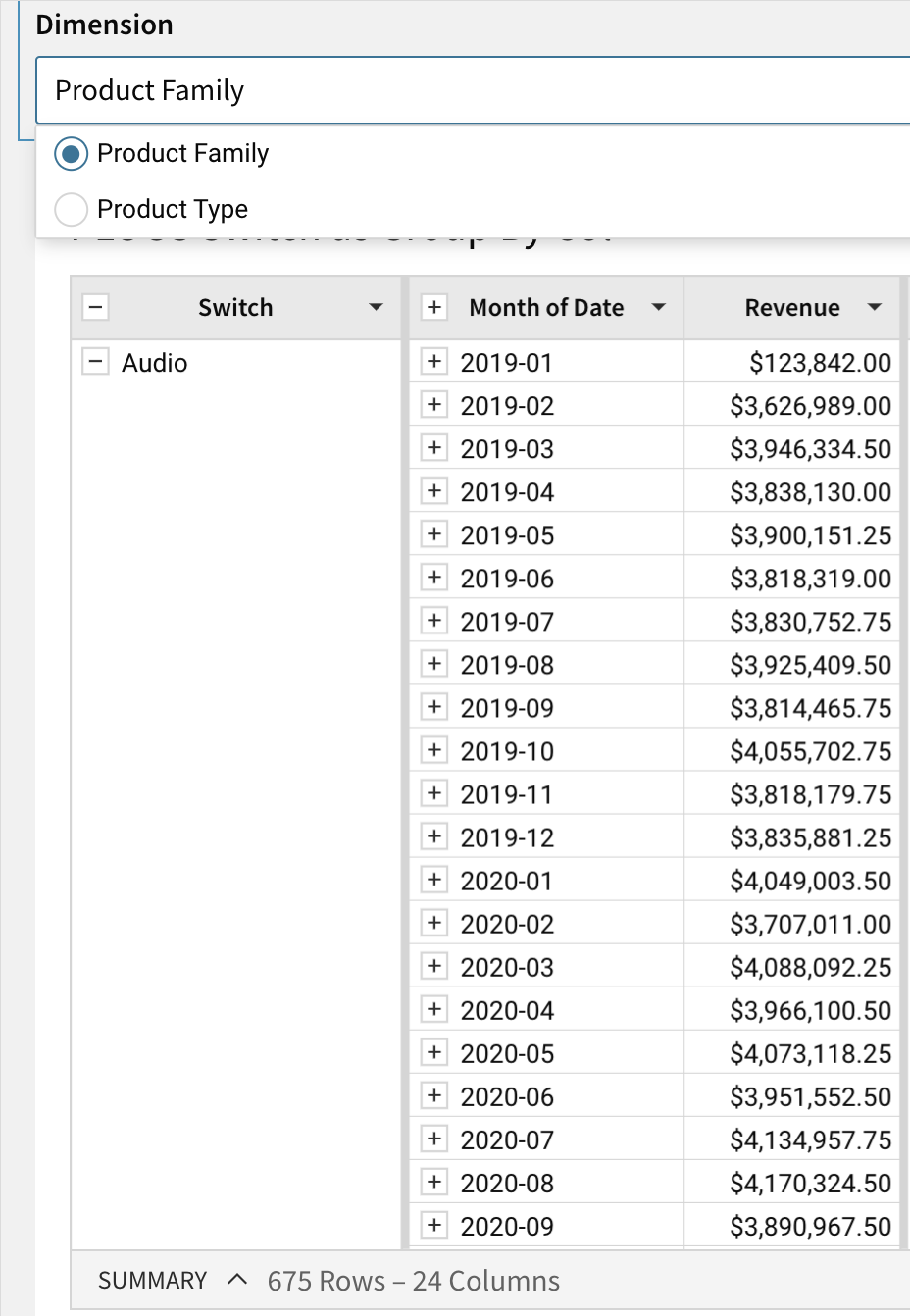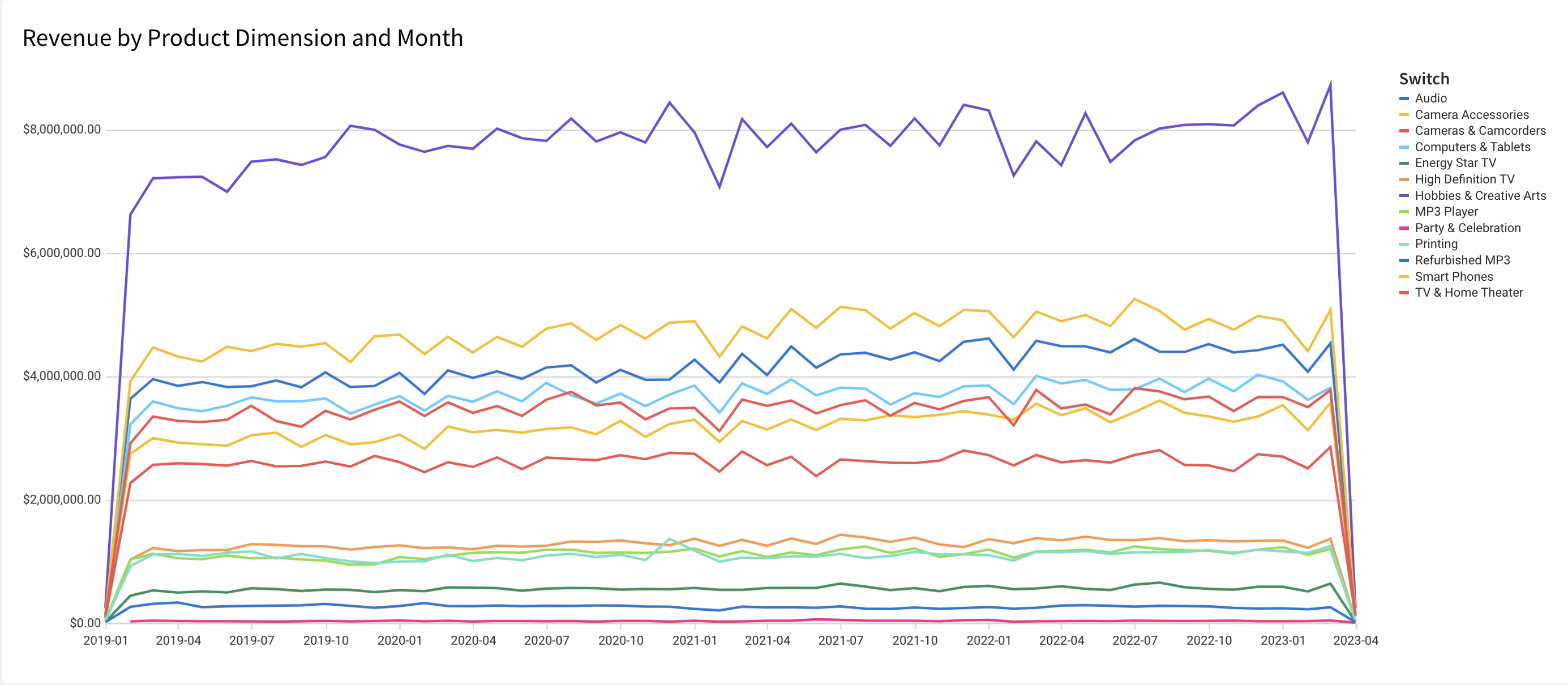Switch
The Switch function returns the result corresponding to the first matching value. If the case argument evaluates to True, then the corresponding result is returned, otherwise the else argument is returned.
Syntax
Switch(value, case 1, result 1, [case 2], [result 2], ... , [else])- value (required) The value to test.
- case 1 (required): The case to test the value against.
- result 1 (required): The result to be returned if its preceding case matches the input value.
- case 2+, result 2+ (optional): Several pairs can be listed in a single function. Every supplied case must have a corresponding result.
- else (optional): The result to be returned if no cases match the value.
If no else condition is supplied, a Null result is returned when no cases are met.
The result(s) argument must be of the same data type. #1 below will not work because the function is asked to return a string OR a number, whereas #2 will work because both outputs are strings.
Switch([Number Column], 1, [String Value], 2, [Numeric Value])Switch([Number Column], 1, [String Value], 2, [String Value])
Example
Switch(1, 0, "None", 1, "One", "Many")- Returns "One"
Switch(2, 0, "None", 1, "One", "Many")- Returns "Many"
A table contains Sales Revenue data that is grouped by a Switch column (i.e., dynamic dimension field) and Month.
Switch([dimension-param], "Product Family", [Product Family], "Product Type", [Product Type])- With a single-select list parameter whose control id is
[dimension-param], you can can use the Switch function to return monthly Sales Revenue data by Product Family or Product Type.


Updated 2 months ago
Related resources
